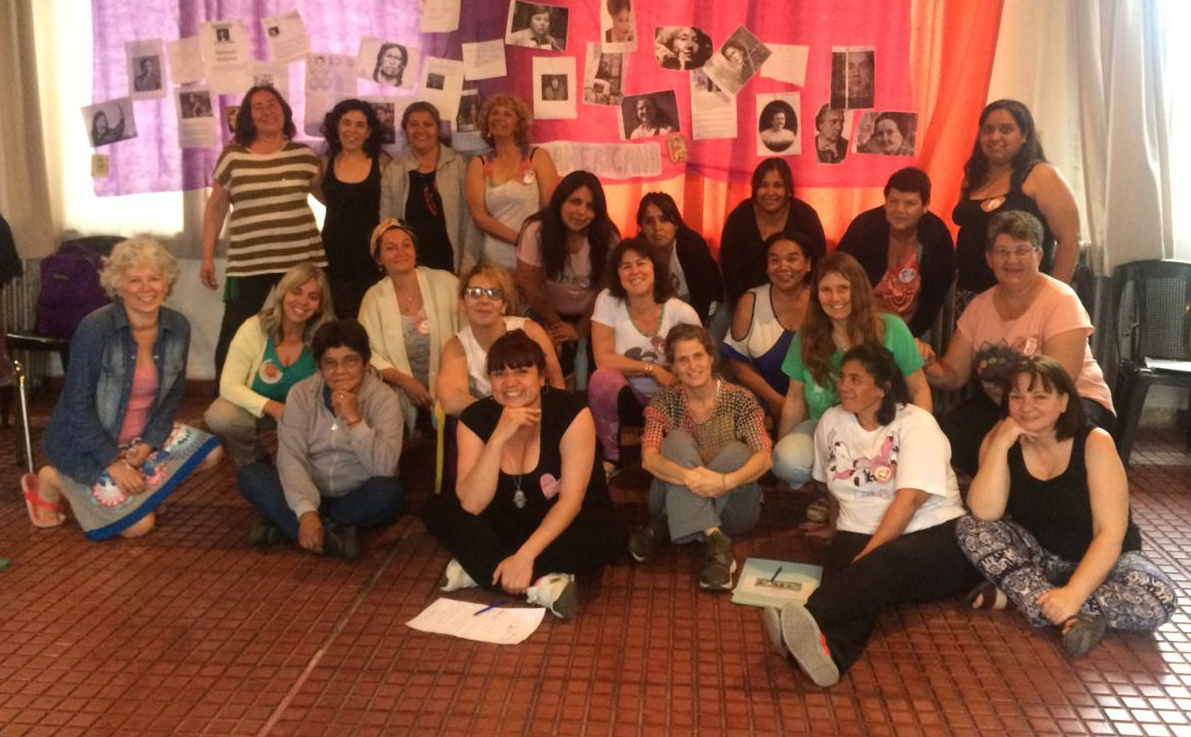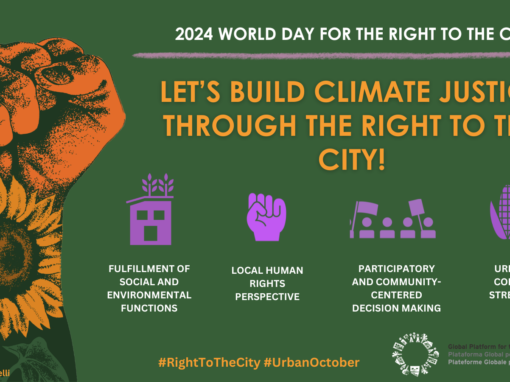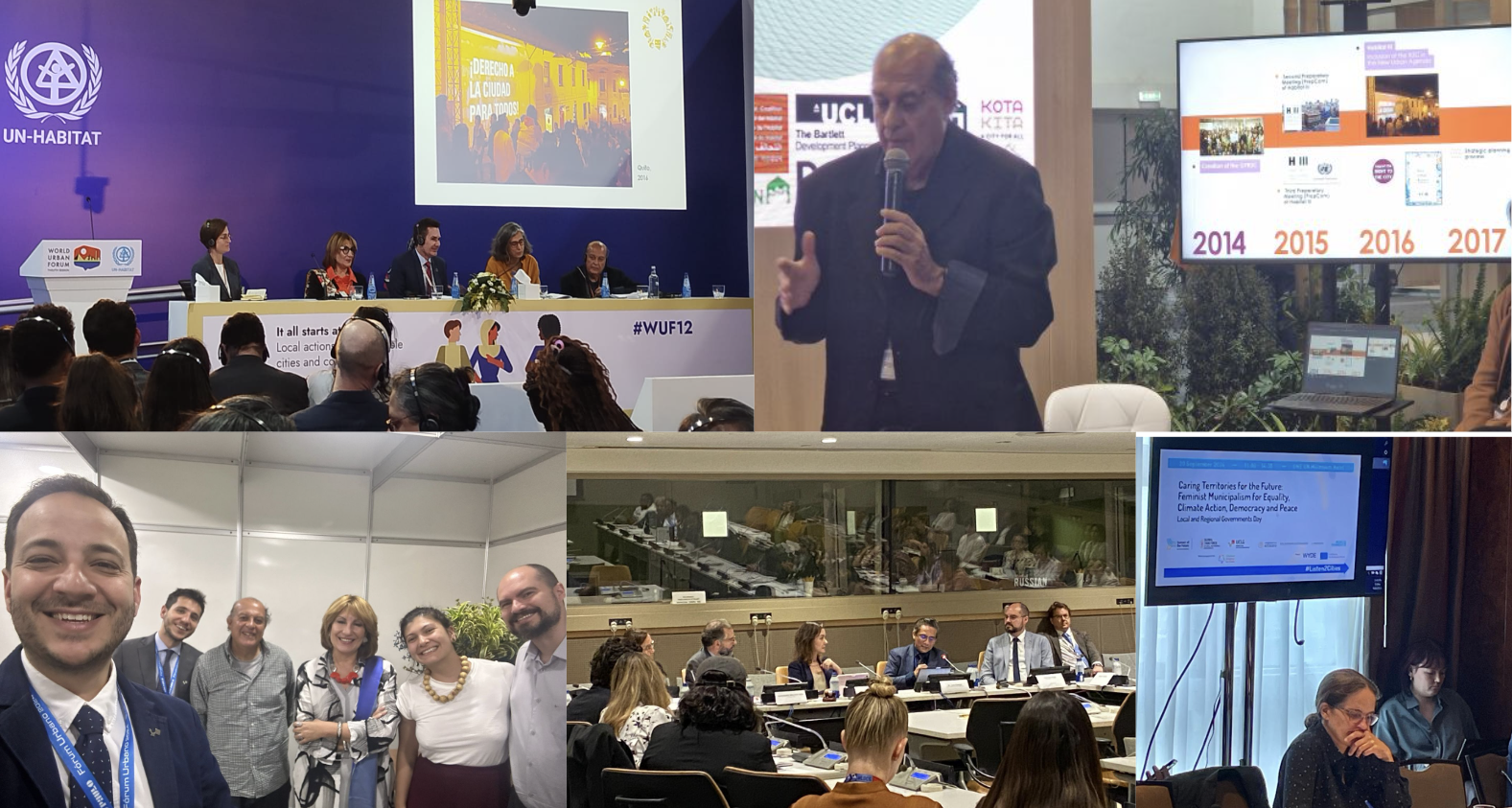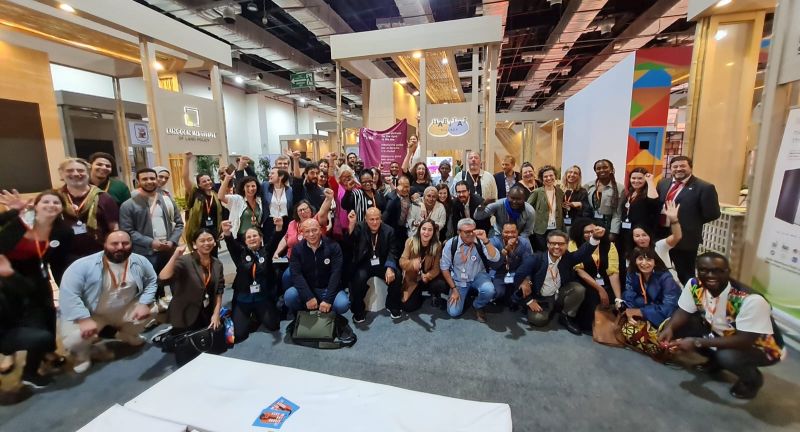A project implemented by Madre Tierra at Habitat Popular from a gender perspective. Through the methodology of workshops, they reflect on institutional practices and interventions, trying to incorporate this perspective in the daily work.
Article by: Madre Tierra [i]

Throughout these 34 years, Madre Tierra has developed different lines of intervention: promoting access to land[ii], land regularization, housing improvement, and neighborhood and community equipment and infrastructure[iii]. The majority of those who participate prominently in these projects in the territory together with the MT team are women. It is for this reason that the work from the Gender Perspective has always been present in the organization but, in 2010, a group space called “ElEvarte” (the Art of EVAs) was formed and has been maintained until today.
In this group, the promoters and neighborhood leaders, together with the gender team of the institution, and through the methodology of workshops, reflect and analyze institutional practices and interventions trying to incorporate this perspective in their daily work. As a trigger for this analysis, we think of Inhabiting as associated with the body, the bonds and the community. These dimensions are problematized with different techniques that help the recognition and appropriation of the diverse habitats to transform them.
In the work on Inhabiting the body we inhabit, the body is conceptualized as our “most intimate house”, the place we inhabit with ourselves, the place where we feel and the vehicle of what we want to express. For this reason, we work on the need to reconcile ourselves with “our” body, a body that women so often over-demand and neglect, depository of our anxieties, fears, anxieties, convinced that revaluing it and generating self-care practices is part of the recovery of self-esteem. From the reflections around this axis, arise above all the right to decide about one’s own body, the possibility for women to enjoy themselves without being “stigmatized”, to be able to say “no”, to question a woman’s mandate to “always do for others” and the need to devote time to herself.
To inhabit our home is related to being able to think about our links within the home, identifying situations of oppression, mistreatment, gender violence as well as situations where gender mandates and stereotypes are reproduced (sexual division of labor), in which women are overburdened with care tasks that make it impossible or relegated the development of other tasks (work, education, free time). In this axis we also analyze the qualitative impact of the housing improvements that besides allowing the access to dignified housing and improving the quality of life, facilitating the daily tasks that mostly fall under patriarchal mandate, on the women of the home. For example, the provision of cold and hot water in bathrooms and kitchens avoids women having to carry buckets of water for household and personal hygiene; washing pools at an adequate height improve body postures avoiding physical pain and neck and waist problems; floor coverings facilitate the daily cleaning of these spaces. It is fundamental in the improvements to construct or to finish qualifying for use new spaces, extending the surface of the houses and generally solving situations of overcrowding. This has repercussions in the links within the families, avoiding the superposition of activities in the same space (use of kitchen-dining room as a bedroom) and the generation of conflicts between the members, as well as making possible the creation of intimacy (separation of the parents’ room from the children’s room).
To Inhabit the community is to occupy of public space and the configuration of our neighborhoods. The perception of urban insecurity is one of the most worrying problems in the imaginary of our societies, aggravated by the treatment of the issue by the mass media, and generally incorporated into the political agenda and campaigns of candidates as one of the priority issues. However, the responses promoted are mostly authoritarian and repressive: they call for an increase in penalties, a lowering of the age of imputability and an increase in the number of police or military personnel on the streets or in popular neighborhoods. When we speak of violence in cities, we do not differentiate how it is lived and subjectified in the different actors, especially the historical violence suffered in the private sphere by women and how it is related to the violence suffered in the public sphere by conceiving women’s bodies as “appropriable” and available to men. It is from here that we decided to work in the workshops on how women make transit through public space and what threats they found in it, feeling violated.
We analyze the urban routes they take on a daily basis according to their tasks: taking children to school, to the square, shopping, carrying out formalities, taking older adults to the doctor, going to work, etc. The majority emphasize the precarious state of the streets and of soil; the uncultivated lands with high pastures and the rubbish dumps that provoke a sensation of greater “insecurity”; the scarcity of frequency in the public transports that causes that they are crowded and have to travel in insecure conditions exposed to accidents and/or abuse; and linear routes, that meaning that they have to use more than one means of transit spending a lot of money or walking long distances.
Another important issue is access to services, including health, which requires attending public centers far away and at dawn to get an appointment, which, added to the state of the means of transport and their frequency, hinders the periodicity in the controls or the attention of preventive issues. This is even more so in the case of women, who generally postpone their health care in search of the attention of the rest of the family members.
Regarding public spaces for recreation, they mention that they are distant (more than 1000 meters) from their homes and are neglected or abandoned, which reinforces the feeling of “insecurity” and the non-appropriation of these spaces for their enjoyment. From these reflections, initiatives emerged to intervene and make this problem visible, carrying out urban interventions: embellishment of some spaces (squares, bus stops, etc.) through murals, paintings, graffiti, messages of denunciation, stickers, placement of lights in the access streets to the busiest neighborhood, making some proposals to local governments and transport companies that cross the neighborhoods.
From the MT team we believe that the path we have travelled thinking about Habitat from a Gender perspective is an enriching bet. Thinking about ourselves from the body-home-community axes has allowed us to begin to deconstruct what is culturally given and to reflect from what is experienced as a means to contribute to the transformation that must undoubtedly take place from the collective and with the complexity that this problem represents. Rethinking the Habitat from the point of view of “Inhabiting our Body, our House, our Community” continues to contribute and challenge us to think of a Habitat without Violence, for everyone.
[i] Madre Tierra (MT) is a civil association with territorial insertion in the Western Zone of Buenos Aires, formed by a technical-social team that promotes and develops projects since 1985 in Hábitat Popular urbano.
[ii] more than 2600 families have gained access to land through the creation of 15 new neighborhoods in the form of Lots with Services.
[iii]drinking water supply, electricity, construction of multipurpose rooms, canteens, nurseries, walkways, luminaires, etc.




